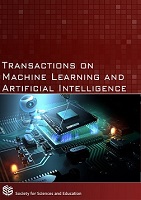Cloud Mining Actionable Pattern Discovery In Big Data : A Survey
DOI:
https://doi.org/10.14738/tmlai.103.12397Keywords:
Actionable Patterns, Action Rules, Emotion Detection, Data Mining, Rule-Based, Object-Based.Abstract
Everyday several tons of data are generated by Social Media and Education sectors. Mining this data can provide a lot of meaningful insights on how to improve user experience in social media and how to improve student learning experience. Action Rule Mining is a method that can extract such actionable patterns from large datasets. Action Rules provide actionable suggestions on how to change the state of an object from an existing state to a desired state for the benefit of the user. There are two major frameworks in the literature of Action Rule mining namely Rule-Based method where the extraction of Action Rules is dependent on the pre-processing step of classification rule discovery and Object-Based method where it extracts the Action Rules directly from the database without the use of classification rules. Hybrid Action rule mining approach combines both these frameworks and generates complete set of Action Rules. The hybrid approach shows significant improvement in terms computational performance over the Rule-Based and ObjectBased approach. This paper gives a brief survey of previous works on action rule mining algorithms, and discusses Action Rule Mining on BigData and in a distributed environment. The applications of actionable action rules in BigData include business opinion mining, educational opinion mining, medical data decision support systems, text emotion detection, and social media data recommendations.
Downloads
Published
How to Cite
Issue
Section
License
Copyright (c) 2022 Angelina Tzacheva, Sanchari Chatterjee, Zbigniew Ras

This work is licensed under a Creative Commons Attribution 4.0 International License.






